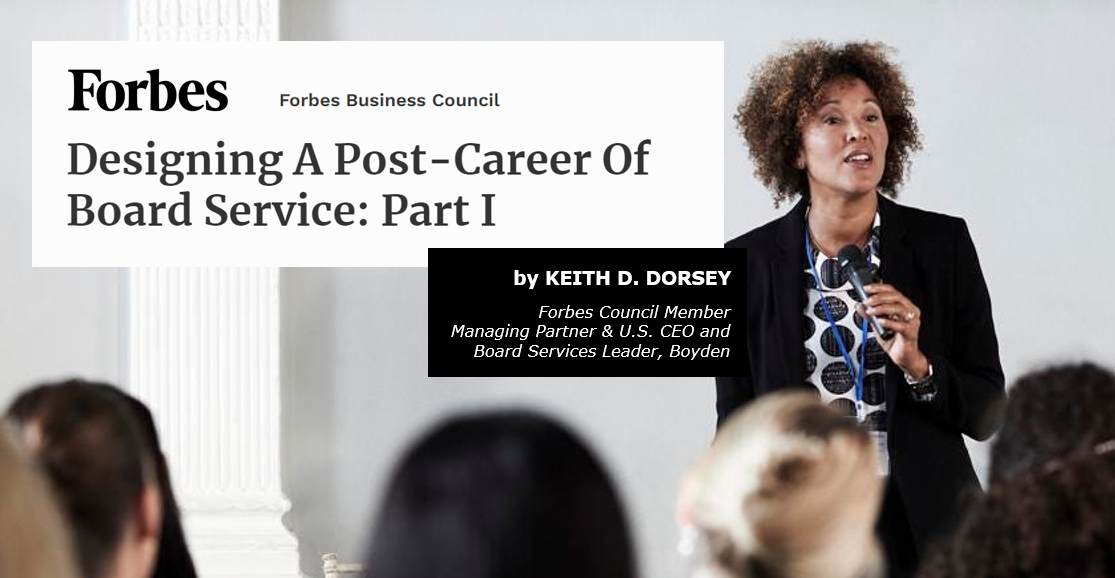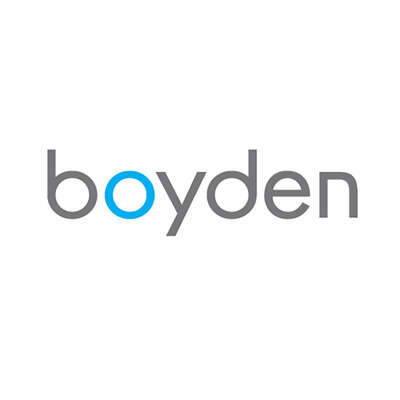This article was originally published by Forbes Business Council. Click here to view the original article.

It is a moment I may never forget. Heart pounding. Mind blank. At a complete loss for words. Was this my first keynote address? A critical presentation? A contract my company desperately needed to close? Nope.
I was at a meeting, trying to introduce myself—something most of us have done too many times to count. The problem was, I had recently retired from my executive role in corporate America. So, who am I? What do I do?
I had no idea.
Plan Your Post-Career—Before It Begins
Like many of you, some of my earliest memories involve being asked what I wanted to do when I grew up. From these childhood dreams, we move on to working hard in school, sports and activities to completing college and carefully crafting our careers.
After so many decades preparing for and then carving out a career, it is little wonder that leaving it is distressing. On the one hand, the experience can enhance our well-being, especially if we leave behind demanding or stressful jobs. On the other hand, we may lose our career attachments, social networks and primary identity anchor, thus diminishing our life satisfaction and morale, thus increasing our distress.
A way to increase your chances of doing well post-career is by adequately preparing for it. In my case, I have created a sense of purpose by helping companies and boards find the executive and director talent they need, in addition to serving on boards of directors myself. This has enabled me to mindfully design this next phase of life and bolster my own psychological and social resources. However, getting to the point of having a lucrative post-career—especially if that involves serving on a board of directors—requires significant planning, care and nurturing.
Although some people are caught by surprise when an organizational change throws them into a post-career, more people start thinking about this next phase in the six months before their primary careers end. But even this six-month runway is far too short to plan and launch a meaningful post-career. Instead, I believe we should be planning for our post-careers—at a bare minimum—five to 10 years before it begins, and preferably earlier in our careers. The corporate directors I interviewed for my own study of pathways to board service similarly emphasized the importance of tailoring your experiences and opportunities while you are working to ensure you are well-positioned to embark on the post-career you desire.
How To Design Your Next Chapter
In the article, “The Role Of Board Service In A Meaningful Post-Career,” I discussed the value of board service. In my previous article, “How Board Sourcing Approaches Contribute To The Corporate Boardroom Diversity Problem,” I introduced two tactics you can take to stand out amid traditional board sourcing. In this article and the next, I outline four steps for making board service part of your post-career.
Envision Your Post-Career Plan
A dominant focus in post-career planning is financial in nature, as it is critical for survival and well-being in this life phase. But financial sufficiency is not enough to make your post-career meaningful. The need to find meaning after leaving your primary career is equally critical because this life stage naturally involves significant identity adjustment as you relinquish your (often longstanding) work role. If you are a professional who has rooted your sense of self in your career, you must begin building new meanings for your life going forward.
Therefore, it is important to think about the content of your post-career, what your purpose will be in this life stage, and what you need to do to have the experiences, connections, knowledge and skills to bring it to fruition once your primary career ends. This means that where you want to be in your post-career influences what you need to do during your primary career. You have likely participated in or even led your company through at least one visioning session. Apply these skills to yourself by crafting your own vision, mission and values so you can figure out your why, legacy and post-career.
Take Stock
Once you determine your vision for your post-career, it is important to assess your strengths, weaknesses and what you are passionate about related to your knowledge, skills and experiences.
A plethora of assessments and inventories are available to help with this, from books like Portfolio Life to personality inventories like Myers-Briggs Type Indicator to assessments like StrengthsFinder. With a clear understanding of what you bring to the table and how that compares to what you will need, think about how you can use these traits and competencies to bring your post-career vision to fruition. If you discover competency gaps, seek developmental experiences and activities to cultivate what you need.
Envisioning your post-career and taking stock by evaluating and bolstering your competencies are important initial steps for designing your next chapter. In my forthcoming article, I will provide powerful tips for leveraging your current relationships and career experiences to make your post-career a reality.


